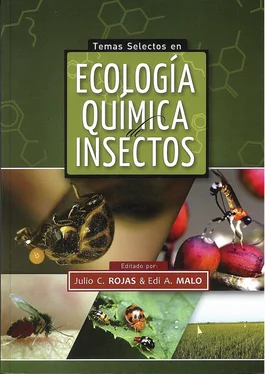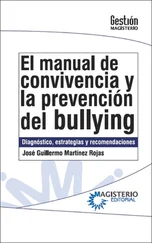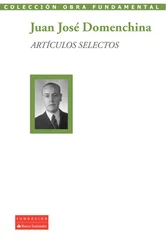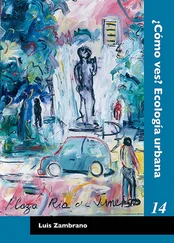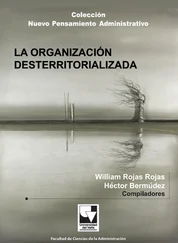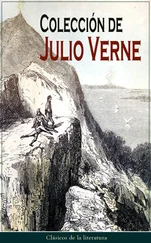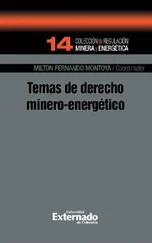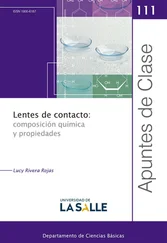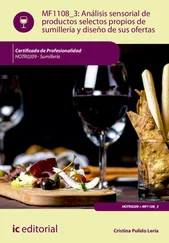AI, M., MIN, S., GROSJEAN, Y., LEBLANC, C., BELL, R., BENTON, R., & SUH G. S. B. 2010. Acid sensing by the Drosophila olfactory system. Nature 468: 691-696.
ALTNER, H. 1977. Insect sensillum specificity and structure: an approach to a new typology. Olfaction Taste 6: 295-303.
ALTNER, H., & PRILLINGER, L. 1980. Ultrastructure of invertebrate chemo-, thermo-, and hygroreceptors and its functional significance. Inv. Rev. Cytol. 67: 69-139.
ANTON, S., & HANSSON, B. S. 1994. Central processing of sex pheromone, host odour, and oviposition deterrent information by interneurons in the antennal lobe of female Spodoptera littoralis (Lepidoptera: Noctuidae). J. Comp Neurol 350: 199-214.
ANTON, S., & HOMBERG, U. 1999. Antennal lobe structure, pp. 97-124 en Hansson, B. S. (ed.), Insect Olfaction. Springer, Berlin.
BENTON, R., VANNICE, K. S., & VOSSHAL, L. B. 2007. An essential role for a CD36-related receptor in pheromone detection in Drosophila . Nature 450: 289-293.
BENTON, R., VANNICE, K. S., GOMEZ-DIAZ, C., & VOSSHALL, L. B. 2009. Variant ionotropic glutamate receptors as chemosensory receptors in Drosophila . Cell 136: 149–162.
BOHBOT, J., LU, T., & ZWIEBEL, L. J. 2010. Molecular regulation of olfaction in mosquitoes, pp. 17-38 en Takken, W., & Knols, B. G. J. (eds.), Olfaction in Vector-Host Interactions . Wageningen Academic Publishers, Wageningen.
BUCK, L., & AXEL, R. 1991. A novel multigene family may encode odorant receptors: a molecular basis for odor recognition. Cell 65: 175–187.
CHAPMAN, R. F. 1998. The Insects. Structure and function 4º ed. Cambridge University Press, Cambridge.
CHRISTENSEN, T. A., & HILDEBRAND, J. G. 1987. Male-specific, sex pheromone-selective projection neurons in the antennal lobes of the moth Manduca sexta . J . Comp. Physiol. A 160: 553–569.
CHRISTENSEN, T. A., & HILDEBRAND, J. G. 1988. Frequency coding by central olfactory neurons in the sphinx moth Manduca sexta . Chem. Senses 13: 123–130.
CHRISTENSEN, T. A., & HILDEBRAND J. G. 1997. Coincident stimulation with pheromone components improves temporal pattern resolution in central olfactory neurons. J. Neurophysiol 77: 775–781.
CHRISTENSEN, T. A., WALDROP, B. R., HARROW, I. D., & HILDEBRAND, J. G. 1993. Local interneurons and information processing in the olfactory glomeruli on the moth Manduca sexta . J. Comp. Physiol. A 173: 385-399.
CHRISTENSEN, T. A., WALDROP, B. R., & HILDEBRAND, J. G. 1998. Multitasking in the olfactory system: context-dependent responses to odors reveal dual GABA-regulated coding mechanisms in single olfactory projection reurons. J. Neurosc. 18: 5999-6008.
CHRISTENSEN, T. A., LEI, H., & HILDEBRAND, J. G. 2003. Coordination of central odor representations through transient, non-oscillatory synchronization of glomerular output neurons. Proc. Natl. Acad. Sci. USA 100: 11076-11081.
CLYNE, P. J., WARR, C. G., FREEMAN, M. R., LESSING, D., KIM, J., & CARLSON, J. R. 1999. A novel family of divergent seventransmembrane proteins: candidate odorant receptors in Drosophila . Neuron 22: 327–338.
COUTO, A., ALENIUS, M., & DICKSON, B. J. 2005. Molecular, anatomical, and functional organization of the Drosophila olfactory system. Curr. Biol. 15: 1535–1547.
DACKS, A. M., GREEN, D. S., ROOT, C. M., NIGHORN, A. J. & WANG, J. W. 2009. Serotonin modulates olfactory processing in the antennal lobe of Drosophila . J. Neurogenet. 23: 366–377.
DALY, K., CHRISTENSEN, T. A., LEI, H., SMITH, B., & HILDEBRAND, J. G., 2004. Learning modulates the ensemble representations for odors in primary olfactory networks. Proc. Natl. Acad. Sci. USA 101: 10476-10481.
DE BELLE, J. S., & KANZAKI, R. 1999. Protocerebral olfactory processing, pp. 243-281, en Hansson, B. S. (ed.), Insect Olfaction . Springer-Verlag, Berlin.
DE BRUYNE, M., CLYNE, P. J. & CARLSON J. R. 1999. Odor coding in a model olfactory organ: the Drosophila maxillary palp. J. Neurosc. 19: 4520–4532.
DE BRUYNE, M., FOSTER, K., & CARLSON, J. R. 2001. Odor coding in the Drosophila antenna. Neuron 30: 537-552.
DIEHL, P. A., VLIMANT, M., & GUERENSTEIN, P. 2003. Ultrastructure and receptor cell responses of the antennal grooved peg sensilla of Triatoma infestans (Hemiptera : Reduviidae). Arthrop. Struct. Dev. 31: 271-285.
DOBRITSA, A. A., VAN DER GOES VAN NATERS W., WARR, C. G., STEINBRECHT, R. A., & CARLSON, J. R. 2003. Integrating the molecular and cellular basis of odor coding in the Drosophila antenna. Neuron 37: 827–841.
DUBNAU, J., GRADY, L., KITAMOTO, T., & TULLY, T. 2001. Disruption of neurotransmission in Drosophila mushroom body blocks retrieval but not acquisition of memory. Nature 411: 476-480.
FRENCH, A. S., TORKKELI, P. H. & SCHUCKEL, J. 2011. Dynamic characterization of Drosophila antennal olfactory neurons indicates multiple opponent signaling pathways in odor discrimination. J. Neurosc. 31:861– 869.
GALIZIA, C. G., & ROESSLER, W. 2010. Parallel olfactory systems in insects: Anatomy and function. Annu. Rev. Entomol. 2010. 55: 399–420.
GALIZIA, C. G. & SACHSE, S. 2010. Odor coding in insects. pp. 35-70 en Menini, A. (ed.), The Neurobiology of Olfaction . CRC Press, Boca Raton.
GALIZIA, C. G., MCILWRATH, S. L., & MENZEL, R. 1999. A digital three-dimensional atlas of the honeybee antennal lobe based on optical sections acquired by confocal microscopy. Cell Tissue Res. 295: 383–94.
GUERENSTEIN, P. G., & GUERIN, P. M. 2001. Olfactory and behavioural responses of the blood-sucking bug Triatoma infestans to odours of vertebrate hosts. J. Exp. Biol. 204: 585–597.
GUERENSTEIN, P. G., & HILDEBRAND, J. G. 2008. Roles and effects of environmental carbon dioxide in insect life. Annu. Rev. Entomol. 53: 161-178.
GUERENSTEIN, P. G., CHRISTENSEN, T. A., & HILDEBRAND, J. G. 2004. Sensory processing of ambient CO2 information in the brain of the moth Manduca sexta . J. Comp Physiol A 190: 707–725.
HALLEM, E., FOX, A. N., ZWIEBEL, L. J., & CARLSON, J. R. 2004. A mosquito odorant receptor tuned to a component of human sweat. Nature 427: 212–213.
HANSSON, B. S., & CHRISTENSEN, T. A. 1999. Functional characteristics of the antennal lobe, pp. 126-157, en Hansson, B. S. (ed.), Insect olfaction. Springer, Berlin.
HEKMAT-SCAFE, D. S., STEINBRECHT, R. A., & CARLSON, J. R. 1997. Coexpression of two odorant- binding protein homologs in Drosophila : implications for olfactory coding. J. Neurosci. 17: 1616– 1624.
HILDEBRAND, J. G. 1996. Olfactory control of behaviour in moths: central processing of odor information and the functional significance of olfactory glomeruli. J. Comp Physiol A 178: 5-19.
HOMBERG U. AND MÜLLER U. 1999. Neuroactive substances in the antennal lobe, pp. 182-204 en Hansson, B. S. (ed.), Insect Olfaction . Springer, Berlin.
IGNELL, R., SENGUL, M., HILL, S., & HANSSON, B. 2010. Odour coding and neural connections, pp 63-90, en Takken W., & Knols, B. G. J. (eds.), Olfaction in Vector-Host Interactions . Wageningen Academic Publishers, Wageningen.
JEFFERIS, G. S., POTTER, C. J., CHAN, A. M., MARIN, E. C., ROHLFING, T., MAURER, C. R., & LOU, L. 2007. Comprehensive map of Drosophila higuer olfactory centers: Spatially segregated fruit and pheromone representation. Cell 128: 1187-1203.
Читать дальше
